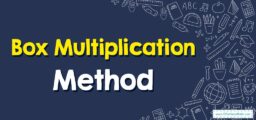How to Use One Multiplication Fact to Complete Another One
Knowing one multiplication fact can help you quickly figure out related facts. This strategy is often used in elementary mathematics education and is based on the principles of commutative, associative, and distributive properties of multiplication.

A Step-by-step Guide to Using One Multiplication Fact to Complete Another One
Sure, using one multiplication fact to complete another is a useful strategy when learning multiplication. It is based on the properties of multiplication like the Commutative, Associative, and Distributive properties. Here is a step-by-step guide:
The Absolute Best Book for 4th Grade Students
Step 1: Identify Known Multiplication Facts
First, you’ll want to start with a multiplication fact that you already know. For example, let’s say you know that \(5 x 4 = 20\).
Step 2: Using the Commutative Property
The Commutative Property states that you can switch the order of the factors and the product remains the same. So if you know that \(5 x 4 = 20\), you also know that \(4 x 5 = 20\).
Step 3: Using the Associative Property
The Associative Property allows us to change the grouping of numbers in a multiplication problem without changing the product. For example, if you know that \(2 x 4 = 8\), you can use this to find out what \(4 x 4\) is. Because 4 is the same as \(2 x 2\), you can group the problem like this: \(2 x (2 x 4)\). Then, using the fact you already know \((2 x 4 = 8)\), you can simplify it to \(8 x 2 = 16\).
A Perfect Book for Grade 4 Math Word Problems!
Step 4: Using the Distributive Property
The Distributive Property allows you to break down a larger multiplication problem into smaller, more manageable parts. For example, if you want to figure out what \(6 x 7\) is, but you only know up to your 5 times table, you can break 6 down into \(5 + 1\). Then, use the Distributive Property to rewrite the problem as \((5 x 7) + (1 x 7)\). If you know that \(5 x 7 = 35\) and \(1 x 7 = 7\), you can add these together to get 42.
So, by using these properties of multiplication, you can leverage multiplication facts you already know to figure out new multiplication facts. This is a great way to build your understanding and fluency with multiplication.
The Best Math Books for Elementary Students
Related to This Article
More math articles
- Top 10 Free Websites for SHSAT Math Preparation
- Decimal Dynamics: How to Evaluating Numerical Expressions with Decimals
- 5th Grade FSA Math Worksheets: FREE & Printable
- ACT Math Test-Taking Strategies
- Algebra Puzzle – Challenge 51
- How to Round Amounts of Money
- SSAT Middle-Level Math Worksheets: FREE & Printable
- 6th Grade KAP Math Worksheets: FREE & Printable
- 10 Most Common ISEE Upper-Level Math Questions
- Poker & Probabilities: Is The Game About Luck or Skill?


















What people say about "How to Use One Multiplication Fact to Complete Another One - Effortless Math: We Help Students Learn to LOVE Mathematics"?
No one replied yet.